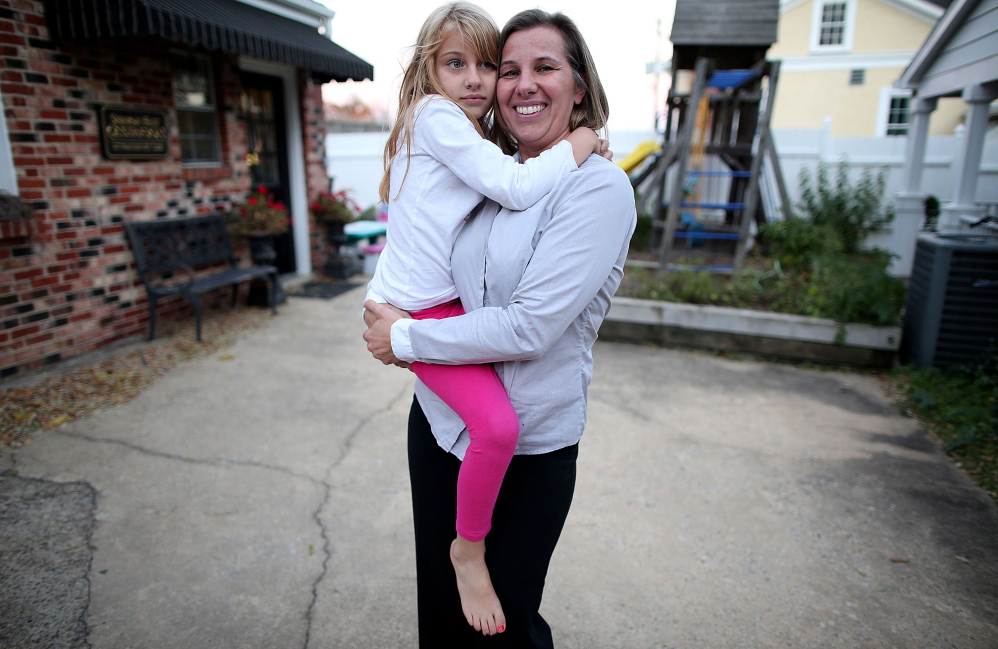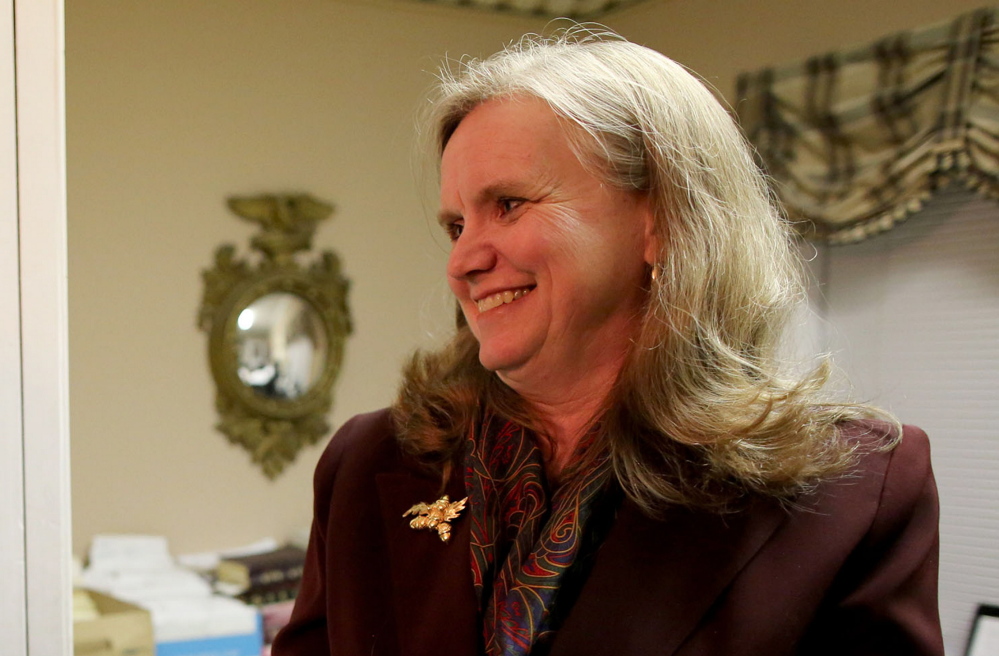Peggy Young didn’t want to become a national icon for pregnant workers. She never imagined she would be at the center of a Supreme Court case that has united every major women’s rights organization on the left with major anti-abortion rights groups on the right.
A private woman, Peggy Young didn’t want all the world to know her most intimate business, including her two failed attempts at conceiving a child with her former husband before her pregnancy in 2006 cost her her job delivering letters at United Parcel Service in Landover, Md.
All Peggy Young wanted, she says, was to drive.
But when her bosses at UPS told her to take unpaid leave until she was no longer pregnant, Young sued, saying the company violated the federal Pregnancy Discrimination Act of 1978 and failed to treat a pregnant Young the way it treated other employees. She lost twice in courts in Maryland, which agreed with UPS that Young did not prove that the company discriminated against her because of her pregnancy. On Wednesday, the Supreme Court will hear oral arguments in her appeal of the closely watched case.
UPS insists it did not discriminate against Young, a part-time driver. Its policy was to make accommodations and provide light-duty work only to employees injured on the job; pregnant workers were classified with employees who have been injured off the job and received no such accommodations.
A QUESTION OF LIFTING
The company requested that Young get a note specifying any work restrictions from her doctor, who advised that she not lift more than 20 pounds as her pregnancy advanced. Because Young’s job called for her to be ready to lift 70 pounds, UPS officials say they had no choice but to ask her to take an unpaid leave.
UPS spokeswoman Kara Ross said that while the delivery company maintains it did nothing wrong in Young’s case, UPS has changed its policy and will consider accommodations for pregnant workers with pregnancy-related restrictions on activity. The policy change was announced in October in the company’s brief to the Supreme Court.
“Laws have changed. Regulatory guidance has changed, and that’s all happened very recently,” Ross said. “So we believe it’s appropriate to update our workplace policies as the times change so the company can attract and retain the best workforce that we can.”
Young, one of the fewer than 10 percent of drivers in UPS’s Capital Division who are women, said in the suit that she delivered letters and rarely lifted anything heavier than envelopes. Further, she said that UPS had granted work accommodations to drivers with drunken driving convictions or who had been involved in accidents or taken off the road for disciplinary reasons.
The case, which has the potential to affect millions of women, exemplifies how much the workforce and mothers’ roles have changed in recent decades, and how far many workplaces lag behind.
“It is all so unreal,” said Young, who is now divorced and lives in Lorton, Virginia, with her youngest child, Triniti, 7. “Somebody tells you you can’t work, when there’s nothing wrong with you, you think, ‘Really? In this day and age?’ I’m not hurt. I’m not disabled. I’m pregnant. I’m having a child. That’s it.’ “
MORE PREGNANT WOMEN WORK
The share of women who work during their first pregnancy has risen from 44 percent in the early 1960s to 65 percent, according to the U.S. Census Bureau. The vast majority work into their last trimesters. In addition, they’re returning to work earlier.
Although the Pregnancy Discrimination Act calls for pregnant workers to be treated fairly, the number of discrimination claims filed with the Equal Employment Opportunity Commission has risen in recent years, particularly among low-wage workers and women in traditionally male fields.
And, unlike 50 years ago, when 11 percent of all mothers were the primary breadwinners for their families, today 40 percent are.
Young’s loss of income, health insurance and benefits for seven months put a financial squeeze on her family. “I wanted to have a family,” she said. “But I had to support my family, too.”
Young said she has worked since she was 15. She said she worked right up to delivery through her first two pregnancies. She never dreamed that after moving to the Washington area with her second husband in 2002 and becoming pregnant with her third child in 2006 she would be required to stop, she said.
On a recent day, Young, 42, a quiet woman with shoulder-length light brown hair, sat amid boxes of depositions and huge piles of briefs and court documents pertaining to her case in the office of her attorney, Sharon Fast Gustafson. The office is a small outbuilding in Gustafson’s Arlington, Virginia, backyard.
It is a place that Young knows well. The two women have been working to get Young a trial since 2008. Young was pregnant and still stung by UPS’s decision to force her off the job when she first sought out Gustafson, an employment attorney who also practices adoption law through Christian Adoption Services. Gustafson had just given birth to her ninth child.
Young’s case has become a family affair. Gustafson’s oldest son, a lawyer, has helped her write and edit briefs. A daughter who is a midwife helped her understand Young’s medical records. Her teenage sons pored over thousands of delivery records and calculated that when Young came back to work after giving birth to Triniti, only 3 percent of her deliveries were more than 20 pounds.
Young and Gustafson say a shared conviction has kept them going: No one, they said in virtual unison, should be forced to choose between continuing her job or continuing her pregnancy.
SHE KEPT DELIVERING
Young continued her second job, delivering flowers, during her entire pregnancy with Triniti. “The flowers she delivered were heavier than the envelopes she delivered,” Gustafson said.
Sam Bagenstos, the former No. 2 official in the U.S. Justice Department’s Civil Rights Division and a law professor at the University of Michigan, will be arguing Young’s case before the Supreme Court. He called Gustafson and offered to help after she and Young lost their appeal to the U.S. Court of Appeals for the 4th Circuit. (Young not only lost, but UPS asked that she reimburse more than $8,000 in attorney’s fees. The court agreed, but stayed the order pending the Supreme Court decision.)
“I’ve thought for a long time that many lower courts were just misreading the law that Congress passed and weren’t giving pregnant workers the rights Congress intended them to have,” Bagenstos said. “This case looked liked it highlighted that injustice.”
His arguments are backed by amicus briefs filed from both the left and right of the political spectrum and from women’s rights organizations as well as anti-abortion groups. “Women’s groups are concerned about guaranteeing equal access to the workplace for women,” he said. “And anti-abortion groups are concerned about removing the pressures to terminate a pregnancy that a worker might not want to make.”
The two sides also came together to support passage of the 1978 Pregnancy Discrimination Act after the Supreme Court, in a split vote, held in 1976 in Gilbert v. GE that General Electric’s policy of terminating disability insurance once a worker became pregnant was not discriminatory.
In recent years, nine states, including Maryland, have passed bipartisan laws to grant pregnant workers the short-term accommodations they need to keep them on the job, just as workers with disabilities receive. And the EEOC issued new guidelines in July explicitly calling for employers to give pregnant workers reasonable accommodations.
While Young is glad to see the changes, she’s still waiting for her own day in court. A Supreme Court decision in her favor would merely grant her the right to take UPS to trial before a jury in district court. Young is seeking to recover lost wages and benefits, as well as damages deemed appropriate by a jury.
These days, Young juggles jobs as a warehouse associate for a government contractor and a waitress at Olive Garden.
“Sometimes, I feel like this little bitty person taking on this big giant. Kind of like a David-and-Goliath thing,” Young said. “I have two daughters. I don’t ever want them to experience what I did. We need to fix this. For them, and for all women.”
Send questions/comments to the editors.




Success. Please wait for the page to reload. If the page does not reload within 5 seconds, please refresh the page.
Enter your email and password to access comments.
Hi, to comment on stories you must . This profile is in addition to your subscription and website login.
Already have a commenting profile? .
Invalid username/password.
Please check your email to confirm and complete your registration.
Only subscribers are eligible to post comments. Please subscribe or login first for digital access. Here’s why.
Use the form below to reset your password. When you've submitted your account email, we will send an email with a reset code.